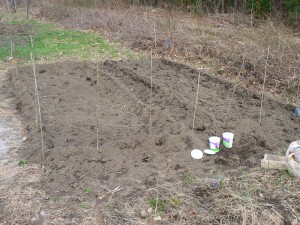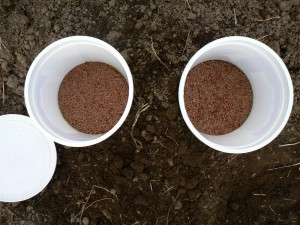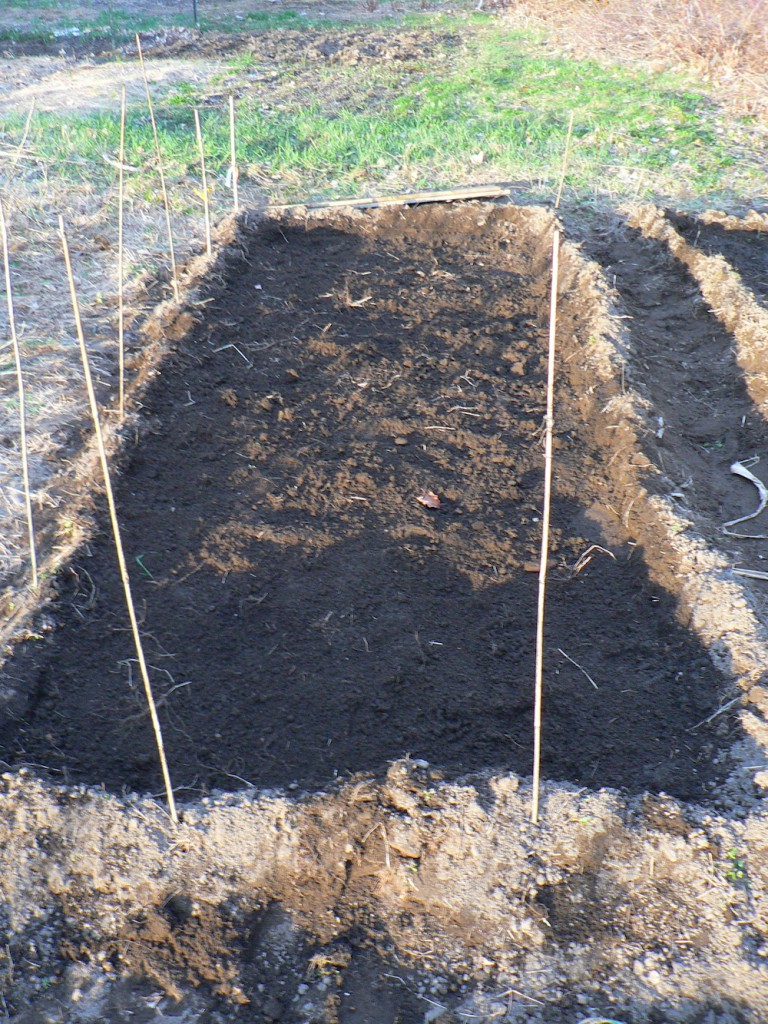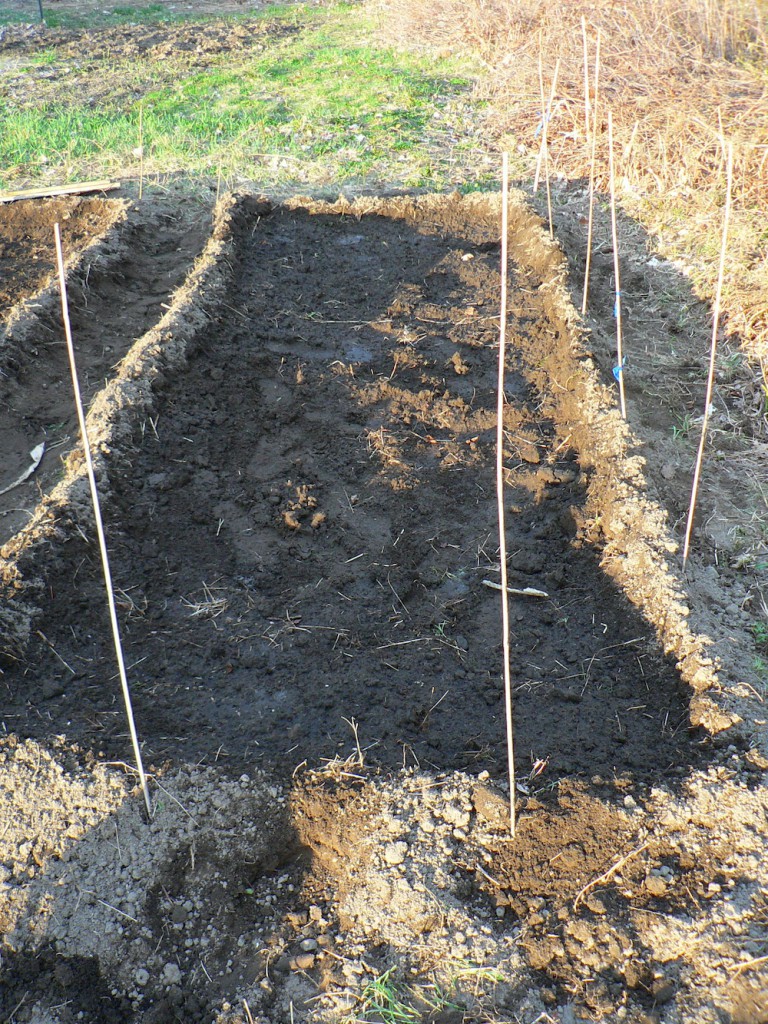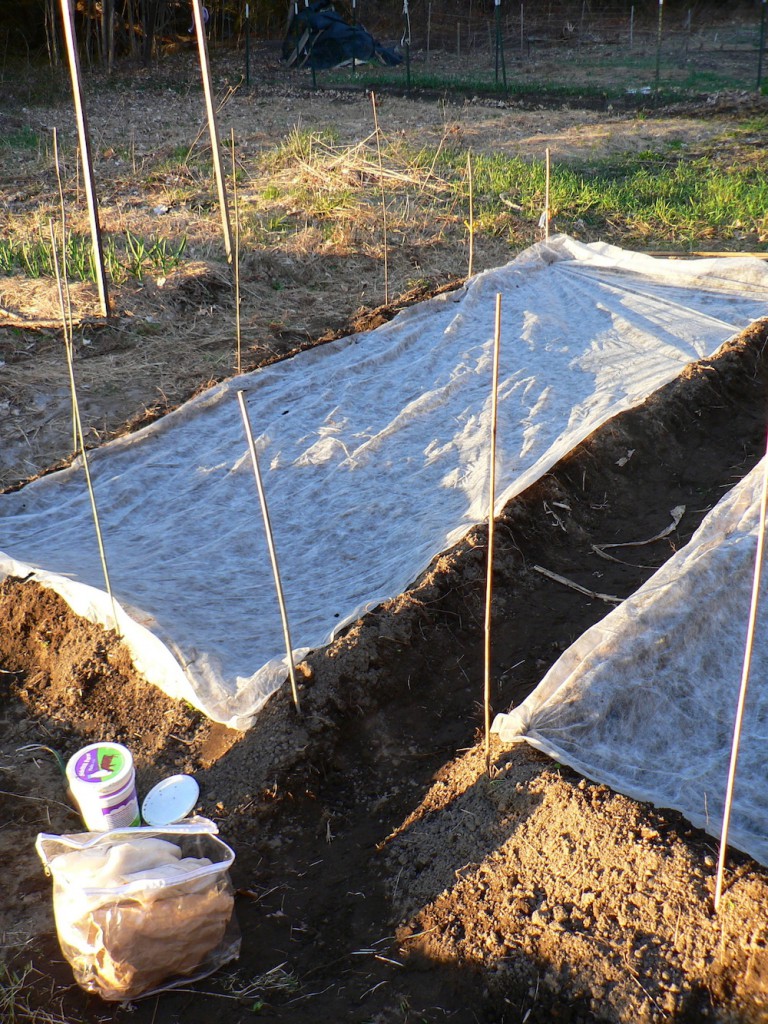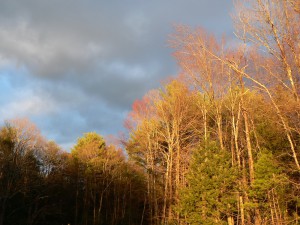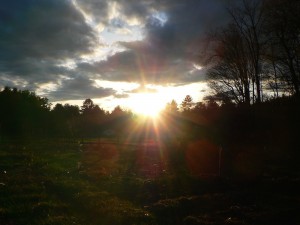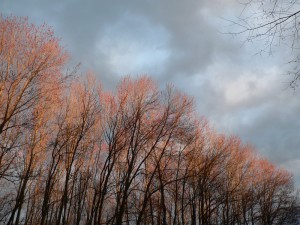Last week, April 20-24, was April vacation week for those of us who are K-12 teachers or students here in Western Massachusetts. I am in the former category. My flax aspirations for the week were astronomically high. I am happy to say that I came very close to meeting my aspirations, and it was utterly thrilling. I did research and learned a lot of new things (which I will write about later). I dug in the soil with a pitchfork, used a rake, a shovel, and a hoe. I planted and watered seeds. These are many of my favorite things, so it was pretty much a perfect week.
Flax is best planted as early as the soil can be worked in the spring, which is typically mid-April around here. Ideally I aim to plant flax during April vacation. Well, technically I might be able to plant earlier, but during April vacation I have time to dig beds, pull out grass roots, purchase and haul soil amendments, etc., so the timing is good.
On Saturday April 25th I actually managed to plant some flax! Consulting my records, calculating and measuring the square feet, digging, healing from blisters and stiff muscles, finding the bamboo stakes from last year, pressing up some little walls of soil to keep in the moisture … all those steps take a while. By the time I got around to actually getting the seeds into the ground on Saturday, the hour was growing late and the shadows were lengthening.
Here are my beds. Last year this area was used for woad, onions, and tomatoes. Crop rotation, such as it is.
This year, I planted this particular patch with the variety called Marilyn, acquired from Johannes and Christian Zinzendorf at the Hermitage in Pennsylvania (thanks to fellow flax and linen study group member, Lisa!). Marilyn is one of the few varieties of fiber flax that is available in any quantity to the small-scale grower in North America. It is imported from Holland. It is tall and lovely.
In the past I have had trouble with lodging when growing Marilyn. Lodging is when the plants flop over and get all bendy, and can never be induced to stand up straight again. To counter this problem this year, I planted fewer seeds per square foot than the Zinzendorfs recommend. Typically they suggest planting at a rate of 1 pound of seed per 100 square feet. My two plots are 12 feet by 4 feet, so 48 square feet each. I used 6 ounces of seed per plot (approximately 12.5 oz. per 100 square feet). Here are my pre-measured seeds:
The reason to cram in the seeds so densely is to force them to grow tall and slender, and to prevent branching. A lower planting density means thicker stalks and coarser fiber, but the stalks ought to be a bit stronger and less prone to flop over. When the stalks fall over they are not that useful. So it is a trade-off between fineness and floppiness. Also, I chose not to add any compost this year. Too much nitrogen contributes to lodging. Too little nutrition and the plants may be stunted. We’ll see how it goes.
After scattering the seed, I tried a teensy experiment. In the left hand bed, shown above, I pressed the seed down (after covering it with soil) by stepping on boards, then packed the soil down more firmly by stepping directly on it with my feet. In the right hand bed (shown below) I sowed, covered with soil, and then just stomped with my feet. The right hand bed is slightly more lumpy. I am curious to see if there is any effect at all on the flax.
After watering, I covered the beds with row cover to keep off people and, hopefully, dogs. Our garden plot is at the community gardens at Amethyst Brook conservation area, so there are lots of passers-by going on walks and enjoying the scenery. Also, we are still having frosts round here. Flax is frost hardy, but I like to give it a little protection.
Beds were sown, watered, and tucked in under blankets. Satisfaction! Then, I glanced up from my labors and saw this magnificent sight:
Now that it is truly spring, the trees are beginning to bloom around here. There are small red flowers on the maples, and the sky was dramatic to boot. I thought, “Wow, it must be really late but the sun hasn’t set yet. I wonder how close it is to the horizon?” I turned around to check, and this was the spectacular sight I beheld:
What a fabulous way to leave the garden, under the protection of the setting sun. As I headed out to the road, the light still caught the tops of the trees while the trunks were in shadow:
Goodnight flax seeds.

